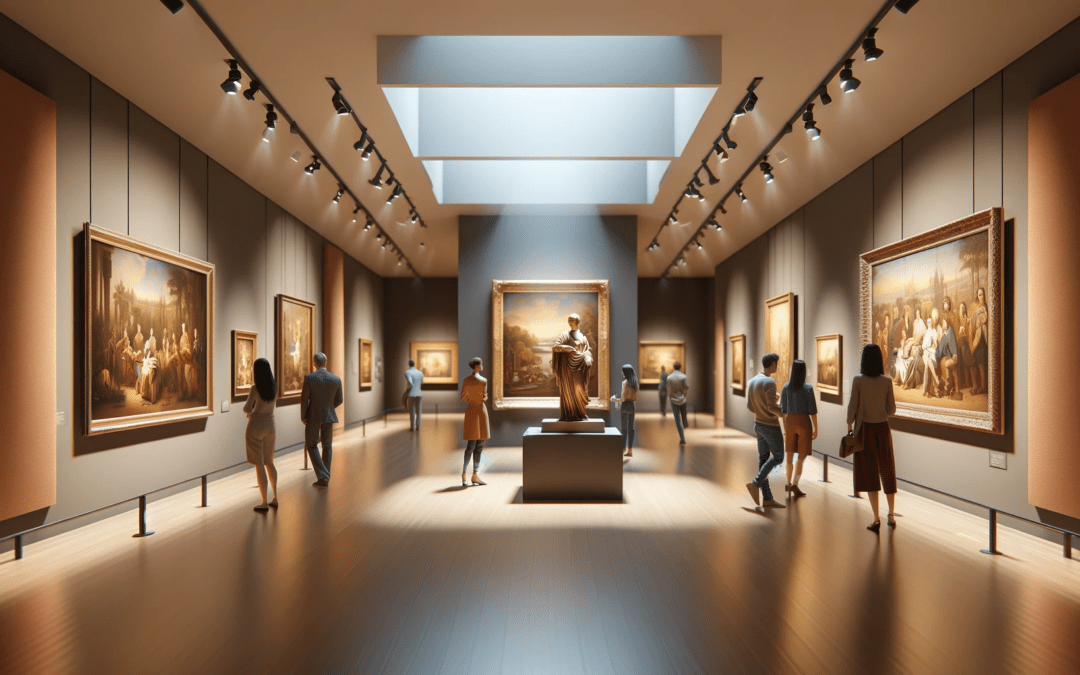Lighting in visitor spaces is more than just a functional aspect; it’s an art that shapes the entire visitor experience. Consider a museum gallery, where the play of light and shadow is not just about visibility, but about storytelling. Each beam of light acts as a silent guide, drawing visitors’ eyes to the subtlest details of a painting, or the intricate lines of a sculpture.
Imagine walking into a room where the lighting itself invites curiosity and awe. Spotlights strategically illuminate key pieces, creating an atmosphere that is both majestic and intimate. The artwork comes alive under this thoughtful illumination, revealing textures and colors that might otherwise go unnoticed.
But the role of lighting extends beyond aesthetics. It is also about creating an accessible and safe environment for all visitors. Proper lighting ensures that each person, regardless of their abilities, can navigate and enjoy the space comfortably. In spaces like museums, where exploration and discovery are paramount, lighting is a crucial element that ensures a seamless and inclusive experience for everyone.
In essence, the way a space is lit can transform an ordinary visit into a memorable journey. Lighting is not just about seeing; it’s about feeling and connecting with the environment in a meaningful way. By paying attention to how we light our public spaces, we can significantly enhance the quality of visitor experiences.
When it comes to creating memorable visitor experiences, whether in museums, retail spaces, or public buildings, one often overlooked aspect is lighting. Far from being just a practical necessity, lighting plays a crucial role in guiding, informing, and enriching the visitor journey.
Setting the Mood and Atmosphere: Lighting is a powerful tool for setting the mood and atmosphere of a space. Soft, warm lighting can create a welcoming, intimate environment, while bright, cool lighting can evoke feelings of excitement and alertness. This psychological impact can significantly enhance the visitor’s emotional connection to the space and its contents.
Highlighting Key Elements: Strategic lighting can draw attention to specific areas or objects, guiding the visitor’s gaze and emphasizing the most important elements of an exhibit or display. This is particularly crucial in spaces like museums and art galleries, where highlighting individual pieces without overshadowing others is essential.
Creating a Narrative: Lighting can be used to create a narrative within a space, guiding visitors through a journey. By varying lighting in different areas, you can subtly suggest a path for visitors to follow, leading them through a story told not just with objects and text, but with light and shadow.
Enhancing Accessibility and Safety: Good lighting is key to ensuring that all visitors, regardless of their physical abilities, can safely and comfortably navigate a space. This includes sufficient lighting in walkways, clear signage, and avoiding glare or overly dark areas that can cause discomfort or confusion.
Influencing Visitor Behavior: Lighting can influence how long visitors stay in a space and how they interact with it. Bright, inviting lighting in a retail space can encourage customers to linger and explore, while calming lighting in a relaxation area can encourage visitors to take a break and unwind.
Adapting to Different Needs: Modern lighting technology allows for flexibility and adaptability. This means that lighting can be adjusted for different events or times of day, catering to a diverse range of needs and preferences.
In conclusion, lighting is a subtle yet powerful element that can dramatically enhance the visitor experience. It’s not just about seeing clearly; it’s about feeling, understanding, and connecting with the space in a deeper, more meaningful way. By paying attention to lighting, we can transform ordinary spaces into extraordinary experiences.

